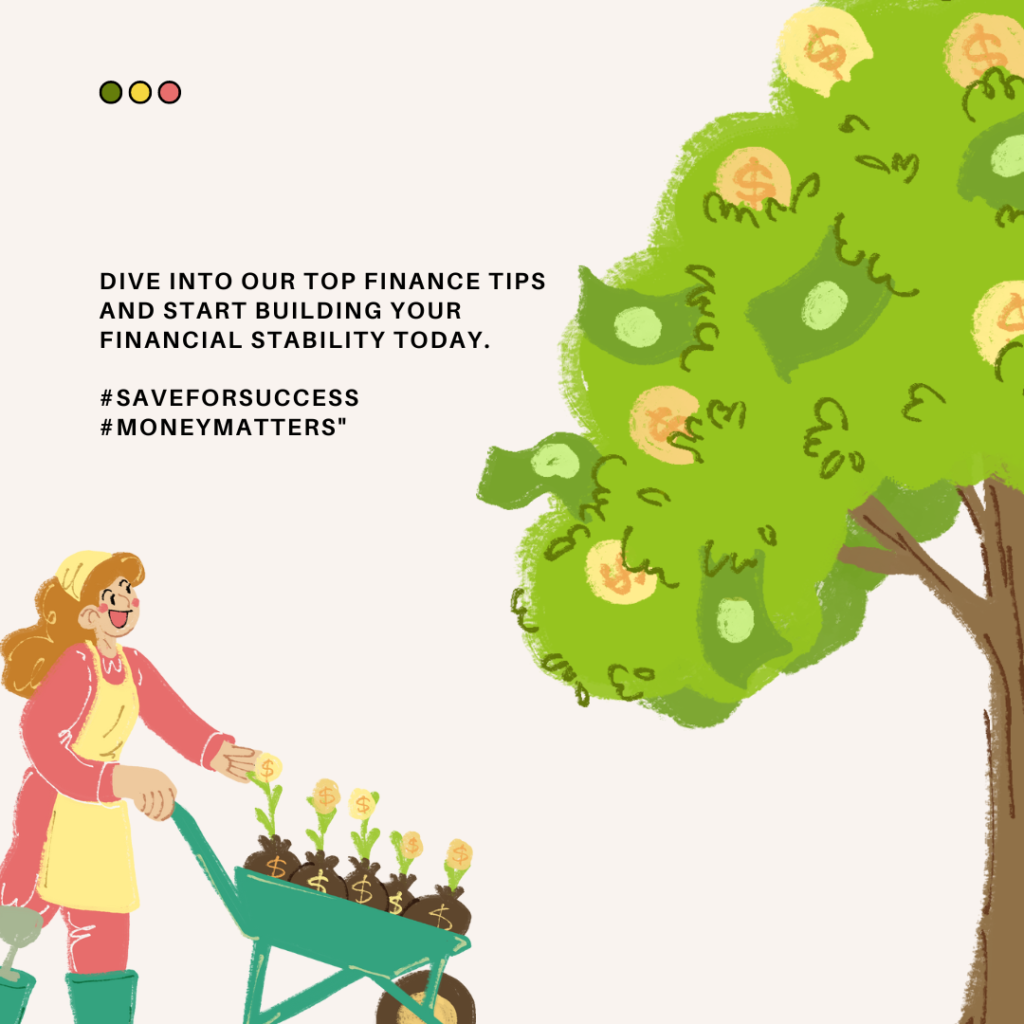Table of Contents
Recommended For You
Why Fixed Deposits Are Still a Safe Bet
Fixed deposits have long been considered one of the safest investment options, primarily because they offer guaranteed returns with minimal risk. This safety net is particularly appealing during periods of economic uncertainty or market volatility. But safety doesn’t have to come at the cost of returns. With current interest rates reaching highs not seen in a decade, now is an opportune time to explore the full potential of FDs.

How to Get Up to 9.5% Returns on FDs
Fixed deposits (FDs) have long been a favored investment choice for individuals seeking safety and guaranteed returns. With interest rates on the rise, FDs are becoming increasingly attractive, especially when returns can go as high as 9.5%. If you’re looking to maximize your returns on FDs, here’s a detailed guide on how to achieve it.
1. Understand the Current Economic Landscape
Interest rates on FDs are heavily influenced by the broader economic environment. Central banks, such as the Reserve Bank of India (RBI), adjust interest rates based on factors like inflation, economic growth, and monetary policies. Currently, the economic landscape has led to a rise in fixed deposit interest rates, making this an opportune time to invest in FDs.
2. Research Financial Institutions
Not all financial institutions offer the same FD rates. While large, established banks like the State Bank of India (SBI) and HDFC Bank offer competitive rates, they may not always provide the highest returns available. Smaller banks, regional rural banks (RRBs), and non-banking financial companies (NBFCs) often offer higher interest rates to attract deposits. Here’s how you can compare:
- Visit Bank Websites: Start by visiting the official websites of various banks and financial institutions to check their current FD rates. For example, you can easily find the fixed deposit interest rate SBI offers directly on their official platform.
- Use FD Comparison Tools: Several financial websites and apps offer tools to compare FD rates across multiple institutions, making it easier to identify the best rates.
- Contact Local Banks: Sometimes, local banks or cooperative banks may offer special FD schemes with higher rates that are not widely advertised.
3. Choose the Right Tenure
The tenure of your FD plays a crucial role in determining the interest rate. Typically, longer tenures attract higher interest rates. However, you should match the tenure with your financial goals:
- Short-Term FDs (1-2 years): Ideal if you need liquidity in the near future. Interest rates are usually lower but still offer a safe return.
- Medium-Term FDs (3-5 years): These offer a balance between higher interest rates and moderate liquidity needs.
- Long-Term FDs (5+ years): These typically offer the highest interest rates, making them ideal for long-term financial goals like retirement or a child’s education.
When planning your investments, consider the fixed deposit interest rate SBI or HDFC FD rates for various tenures to make an informed decision.

4. Opt for Monthly Compounding
Compounding is the process where the interest earned is added to the principal amount, and then the interest is calculated on the new total. The frequency of compounding significantly affects the final amount you receive at maturity:
- Monthly Compounding: This offers the highest returns, as the interest is compounded more frequently.
- Quarterly, Half-Yearly, and Annual Compounding: These are also options, but they will yield slightly lower returns compared to monthly compounding.
When choosing an FD, always opt for monthly compounding to maximize your returns. Banks like SBI and HDFC often provide different compounding options, so it’s important to choose the one that maximizes your returns.
5. Look for Special FD Schemes
Certain banks and financial institutions offer special fixed deposit schemes with higher interest rates. These schemes may be available for limited periods or for specific customer categories, such as senior citizens or women. Examples include:
- Senior Citizen FDs: These often come with an additional 0.25% to 0.50% interest rate compared to regular FDs.
- Tax-Saving FDs: These offer tax benefits under Section 80C of the Income Tax Act but typically come with a lock-in period of 5 years.
Research these schemes thoroughly, especially if you’re considering HDFC FD rates, as they often offer special rates for different customer segments.
6. Consider Smaller Banks and NBFCs
While larger banks like SBI and HDFC are generally safer, smaller banks and NBFCs can offer significantly higher FD rates, sometimes up to 9.5%. However, these institutions may carry a slightly higher risk. To mitigate this risk:
- Check Credit Ratings: Look at the credit ratings of the bank or NBFC provided by agencies like CRISIL, ICRA, or CARE. A higher rating indicates better financial stability.
- Diversify Your Investment: Instead of investing a large sum in one FD, spread your investment across multiple institutions. This reduces the risk if one institution faces financial difficulties.
Before opting for higher rates from smaller institutions, compare them with the fixed deposit interest rate SBI and HDFC FD rates to ensure a balance between risk and return.
7. Evaluate Premature Withdrawal Penalties
FDs typically come with a lock-in period, and withdrawing your money before the tenure ends may result in penalties. These penalties can reduce your effective interest rate, so it’s crucial to:
- Understand the Penalties: Check the penalty rates for premature withdrawal before investing. Some institutions may charge a flat fee, while others reduce the interest rate.
- Choose FDs with Lower Penalties: Some banks offer FDs with lower penalties or flexible withdrawal options. These can be a good choice if you anticipate needing liquidity.
For instance, when considering the fixed deposit interest rate SBI offers, it’s also important to understand their premature withdrawal policy to avoid any unexpected penalties.
8. Leverage Laddering Strategy
Laddering involves splitting your investment into multiple FDs with different maturities. For example, instead of investing ₹5 lakhs in a single 5-year FD, you could invest ₹1 lakh each in FDs with tenures of 1, 2, 3, 4, and 5 years. This strategy offers several benefits:
- Better Interest Rate Management: As each FD matures, you can reinvest it at the current interest rate, which may be higher than when you initially invested.
- Increased Liquidity: You have FDs maturing at regular intervals, providing access to funds if needed.
By using a laddering strategy, you can take advantage of the best available rates from institutions like HDFC while maintaining liquidity.
9. Consider Tax Implications
Interest earned on FDs is fully taxable under the head of “Income from Other Sources.” For those in higher tax brackets, this can significantly reduce net returns. To optimize your tax liabilities:
- Invest in Tax-Saving FDs: These offer tax deductions under Section 80C but come with a lock-in period of 5 years.
- Submit Form 15G/15H: If your total income is below the taxable limit, submit Form 15G (for those below 60) or Form 15H (for senior citizens) to avoid Tax Deducted at Source (TDS) on your FD interest.
When planning your FD investments, consider the post-tax returns, especially when looking at HDFC FD rates or similar offerings.
10. Stay Informed and Review Regularly
The financial landscape is constantly evolving, with interest rates and FD offerings changing regularly. To ensure you’re getting the best returns:
- Regularly Review FD Rates: Keep an eye on changes in FD interest rates, especially when your FDs are nearing maturity. For example, regularly checking the fixed deposit interest rate SBI offers can help you stay informed.
- Stay Updated on New Schemes: Banks often launch new FD schemes with higher rates or additional benefits. Regularly checking can help you take advantage of these offers.
By staying informed and regularly reviewing your FD investments, you can ensure that you are always getting the best possible returns, whether you are investing with SBI, HDFC, or any other financial institution.

Current Trends in Fixed Deposit Interest Rates
As of now, FD interest rates are at their peak in the last decade. This surge is driven by various economic factors, including inflation and central bank policies aimed at stabilizing the economy. For investors, this means an excellent opportunity to lock in high rates.
Fixed Deposit Interest Rate Comparisons
When seeking the best fixed deposit interest rate, a detailed comparison is essential. Let’s take a closer look at the offerings from some of the major banks:
- State Bank of India (SBI): As one of India’s largest and most trusted banks, SBI offers competitive FD rates. However, the rates here may not be as high as those offered by smaller institutions. Currently, SBI offers FD rates ranging from 6.5% to 7.5%, depending on the tenure.
- HDFC Bank: HDFC, known for its robust financial products, offers FD rates that can range from 7% to 8.25%. While these rates are attractive, they may still fall short of the maximum potential offered by other institutions.
- Small Finance Banks and NBFCs: Smaller banks and NBFCs often provide the highest FD rates, sometimes reaching up to 9.5%. However, the trade-off is that these institutions may carry a slightly higher risk than large, established banks.
The Role of Research in Maximizing FD Returns
Fixed Deposits (FDs) have long been a popular choice for conservative investors who prioritize safety and guaranteed returns. However, to truly maximize the potential of an FD, it is essential to conduct thorough research. With numerous banks and financial institutions offering varying interest rates, tenures, and terms, a well-researched decision can significantly enhance your returns. Here’s an in-depth look at how research plays a crucial role in maximizing FD returns, including the importance of understanding the fixed deposit interest rate offered by major banks like SBI and HDFC.
1. Comparing Interest Rates Across Institutions
One of the most critical factors influencing FD returns is the fixed deposit interest rate offered by the bank or financial institution. Interest rates can vary significantly between institutions, even for the same tenure. For instance, while a major public sector bank like SBI might offer a certain rate on a 5-year FD, a smaller private bank or a Non-Banking Financial Company (NBFC) might offer a higher rate for the same period.
- Bank Websites and Apps: Start by visiting the official websites of banks and NBFCs. For example, you can check the fixed deposit interest rate SBI offers directly on their official platform.
- Comparison Tools: Use online comparison tools that aggregate FD rates from multiple institutions, allowing you to quickly identify the best rates available.
- Special Schemes: Some banks offer special FD schemes with higher rates during specific periods or for certain customer segments, such as senior citizens or women.
By comparing fixed deposit interest rates across different institutions, including HDFC FD rates, you can ensure that you’re not missing out on better returns elsewhere.
2. Understanding the Impact of Compounding Frequency
The frequency at which interest is compounded can have a significant impact on your overall returns. FDs may offer interest compounded monthly, quarterly, half-yearly, or annually. The more frequent the compounding, the higher the effective rate of return.
- Monthly Compounding: Interest is added to the principal every month, and the next month’s interest is calculated on the new total. This results in higher returns compared to quarterly or annual compounding.
- Annual Percentage Yield (APY): This metric helps you compare FDs with different compounding frequencies on a level playing field. The APY reflects the real rate of return, considering the compounding effect.
Researching the compounding frequency offered by different banks can help you select the FD that maximizes your returns. For example, when looking at HDFC FD rates, consider how often the interest is compounded to get the best possible outcome.
3. Evaluating Tenure Options
The tenure of an FD is another crucial factor that affects the interest rate. Typically, longer tenures attract higher interest rates. However, this isn’t always the case, as some banks may offer special rates for certain tenures.
- Short-Term FDs: Ideal for those who may need liquidity within a short period, but usually come with lower interest rates.
- Medium-Term FDs: These strike a balance between better returns and moderate liquidity.
- Long-Term FDs: Often provide the highest interest rates but require you to lock in your funds for an extended period.
By carefully evaluating and choosing the right tenure based on your financial goals and needs, you can optimize your FD returns. For instance, you might find that the fixed deposit interest rate SBI offers on a 5-year FD is more attractive than on a 3-year FD.
4. Exploring Smaller Banks and NBFCs
While large, well-known banks are often the first choice for many investors, smaller banks and NBFCs can offer competitive or even superior interest rates to attract customers. However, investing with smaller institutions comes with its own set of risks.
- Credit Ratings: Research the credit ratings of the institution provided by agencies like CRISIL, ICRA, or CARE. A high credit rating indicates better financial health and lower risk.
- Deposit Insurance: Ensure that the institution is covered under the Deposit Insurance and Credit Guarantee Corporation (DICGC), which insures deposits up to ₹5 lakhs per bank per depositor in India.
By balancing the higher returns offered by smaller institutions with their associated risks, you can potentially earn more without compromising too much on safety. This approach is especially useful if you’re comparing HDFC FD rates with those of smaller banks or NBFCs.

5. Investigating Premature Withdrawal Policies
One aspect that often gets overlooked during FD investments is the policy on premature withdrawals. FDs typically have a lock-in period, and withdrawing funds before maturity can result in penalties or a lower interest rate.
- Penalty Rates: Some institutions impose heavy penalties for early withdrawal, which can significantly reduce your effective returns.
- Flexible Withdrawal Options: Certain banks offer FDs with more lenient withdrawal terms, where the penalty is minimal or non-existent.
Researching these policies in advance ensures that you won’t face unexpected costs if you need to access your funds earlier than planned. Knowing the premature withdrawal terms for the fixed deposit interest rate SBI offers can help you avoid potential pitfalls.
6. Leveraging Laddering Strategy
Laddering is an investment strategy where you divide your investment into multiple FDs with different maturity dates. This approach provides better liquidity and reduces the risk of being locked into a lower interest rate for an extended period.
- Staggered Maturities: By having FDs mature at different times, you can reinvest at potentially higher rates as interest rates rise.
- Balancing Risk and Reward: Laddering allows you to benefit from higher long-term rates while still maintaining access to funds at regular intervals.
Researching how to structure a laddering strategy effectively can help you maximize returns while managing liquidity needs. This is particularly useful if you’re comparing current HDFC FD rates to decide how to allocate your investments.
7. Exploring Special FD Schemes
Banks and financial institutions often introduce special FD schemes that offer higher interest rates or additional benefits. These schemes may be targeted at specific customer segments or be available for a limited time.
- Senior Citizen FDs: Typically offer an additional 0.25% to 0.50% interest rate above the regular FD rates.
- Tax-Saving FDs: While these have a lock-in period of 5 years, they offer tax benefits under Section 80C of the Income Tax Act.
By keeping an eye out for these special schemes, such as those that might offer a higher fixed deposit interest rate for a limited period, you can take advantage of higher rates or tax benefits.
8. Considering the Impact of Inflation
While FDs offer guaranteed returns, it’s essential to consider the impact of inflation on your investment. Inflation gradually reduces the purchasing power of your returns over time.
- Real Rate of Return: This is the nominal return adjusted for inflation. For instance, if your FD offers 7% interest and inflation is 4%, your real rate of return is only 3%.
- Inflation-Protected Alternatives: Consider if FDs are the best option in an inflationary environment or if other instruments like inflation-indexed bonds might be better suited to protect your purchasing power.
Researching inflation trends and considering them in your investment decisions ensures that your real returns meet your financial objectives. This is important when looking at fixed deposit interest rates to ensure your returns outpace inflation.
9. Tax Implications and Planning
Interest earned on FDs is taxable under “Income from Other Sources.” Depending on your tax bracket, this can significantly reduce your net returns.
- Form 15G/15H: If your total income is below the taxable limit, submit these forms to avoid Tax Deducted at Source (TDS).
- Tax-Saving FDs: Opt for these if you are looking for tax deductions under Section 80C, though they come with a mandatory 5-year lock-in period.
Understanding the tax implications and planning accordingly can help you retain more of your FD returns. For example, while the HDFC FD rates might seem attractive, calculating the post-tax returns will give you a clearer picture of the actual benefits.
Regularly reviewing and adjusting your investments based on market trends ensures that you’re always getting the best possible returns. Keeping an eye on HDFC FD rates and similar updates will help you stay ahead.
Strategies for Choosing the Right FD
Selecting the right FD involves more than just picking the highest interest rate. Here are some strategies to ensure you make the best choice:
- Diversify Your FDs: Instead of putting all your money into one FD, consider spreading it across multiple FDs with varying tenures and interest rates. This diversification can protect you from changes in interest rates and provide more flexibility.
- Reinvest Matured FDs: When an FD matures, don’t withdraw it immediately. Instead, reinvest the matured amount in a new FD, preferably with a higher interest rate or better terms. This strategy, known as “laddering,” ensures that you continue to earn high returns over time.
- Consider Tax Implications: Interest earned on FDs is taxable, which can reduce your overall returns. If you fall into a higher tax bracket, look for tax-saving FDs that offer deductions under Section 80C of the Income Tax Act, 1961.
The Best Time to Invest in Fixed Deposits
With FD interest rates at their highest in the past decade, now is the perfect time to invest. Locking in these high rates for the long term can provide you with stable and attractive returns, making FDs an excellent choice for conservative investors looking to balance their portfolios.
Conclusion: Secure Your Financial Future with Strategic FD Investments
Fixed deposits, when chosen carefully, can be a powerful tool for securing your financial future. By understanding the nuances of FD interest rates, compounding frequency, and the importance of thorough research, you can maximize your returns while keeping your investment safe. In a world of fluctuating markets and economic uncertainty, FDs offer a reliable, high-return investment option that shouldn’t be overlooked.
Now is the time to take advantage of the high FD interest rates and make your money work harder for you. Whether you’re saving for a specific goal or simply looking to grow your wealth safely, a well-chosen FD can be a cornerstone of your financial strategy.
Disclaimer : The aim of every content at Wall Street Trends is solely for information & educational purposes. financial awareness & literacy in our Bharat!
Thus, We aim to promote We are not SEBI Registered & don’t offer PMS/Advisory, nor any kind of Account Handling Service.
Stock Market Investments are subject to Market Risks.
The returns are never guaranteed, assured or linear.
Do consult your SEBI Register Advisor before making any Investment Decision.











